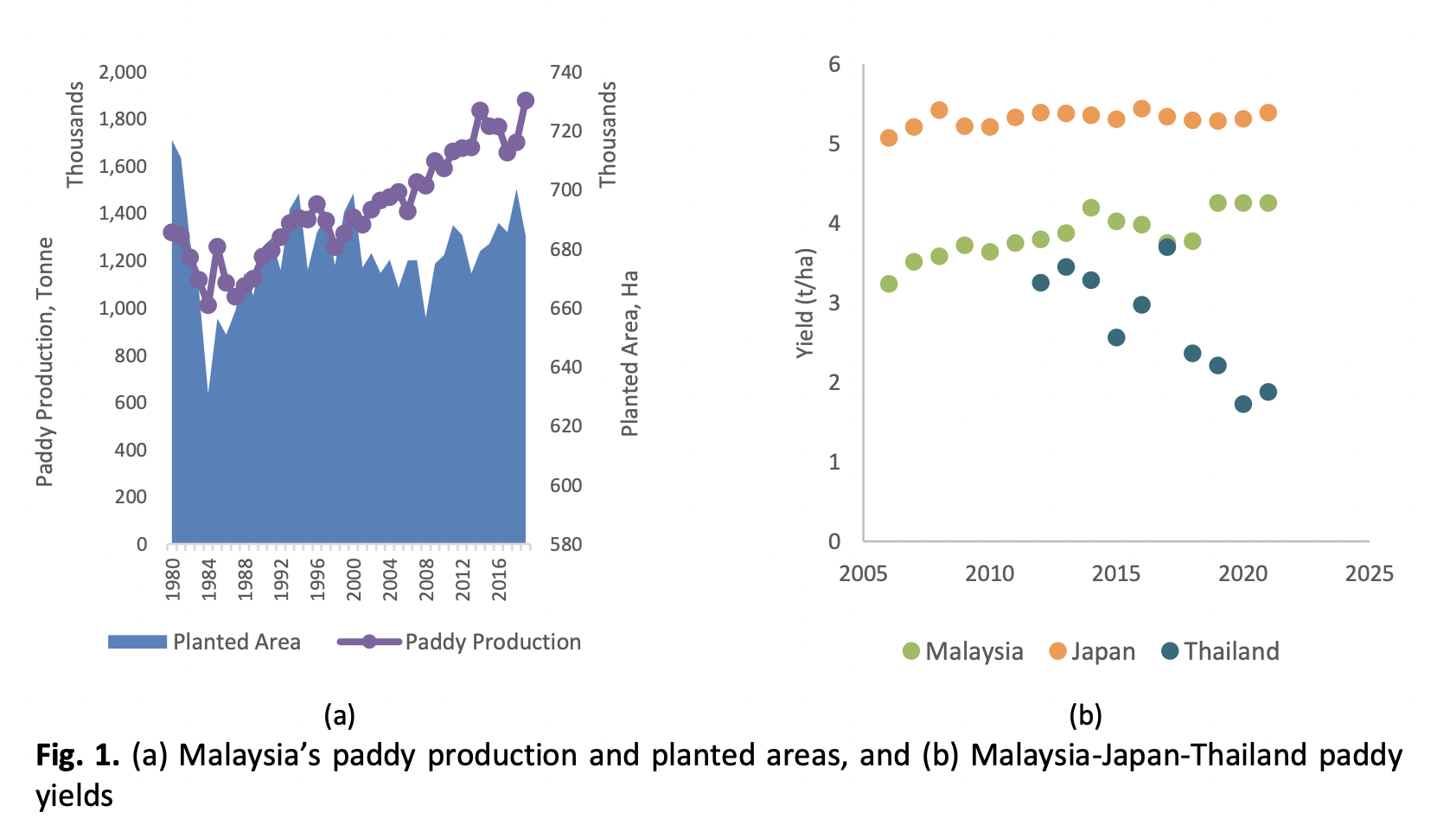Energy Consumption on Farm Automation: Case of Paddy Plantation
DOI:
https://doi.org/10.37934/arfmts.107.1.174189Keywords:
Energy consumption, farm automation, paddy plantation, MADA, MalaysiaAbstract
Rice farming is one of the most energy-intensive production systems. Energy is becoming a critical factor that requires special attention to maintain efficiency. This study aimed to identify the introduction of automated systems and determine the energy consumption of automated systems in paddy plantations. The research covered Muda Agricultural Development Authority (MADA) areas, a major paddy planting area in Malaysia. Observations and interviews were conducted with selected farmers to obtain detailed data on energy consumption. The paddy planting process consists of nine steps: soil compatibility, condition of paddy fields, soil preparation, planting process, fertilisation, water management, pest control, harvest, and paddy handling. Nevertheless, as an automation system, drones were the only technology used in MADA areas (Region II). The harvesting process consumes the most energy during paddy planting, with an average value of 238.17 MJ, followed by the paddy handling process at 74.34 MJ. By using more powerful automation systems, farmers can reduce dependence on energy and increase yield efficiency. Greater engagement and impressive contributions are needed to enhance the yield and resilience of the agriculture sector.
Downloads

































